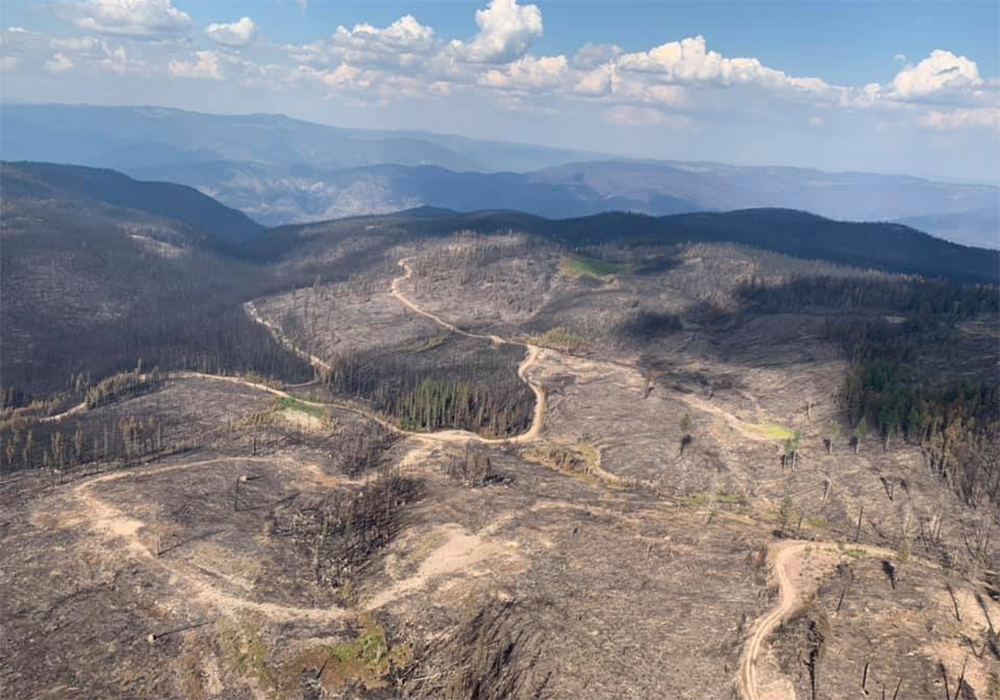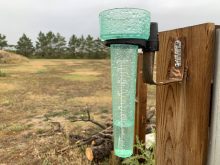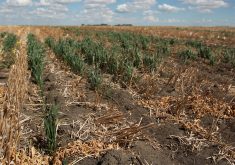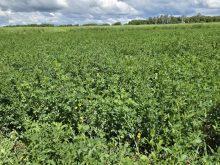It has been a difficult year for producers across parts of the two provinces as wildfires and lack of rain wreak havoc
It’s been a harrowing summer for Rhonda MacDonald as 30 of her cows remain missing and presumed dead after a wildfire tore through rangeland near her Merritt-area ranch in the British Columbia Interior.
“It wasn’t even a wall of flame. It was a tornado of fire coming around the edge of the mountain towards us,” said MacDonald.
She said even if the missing cows can be found, it’s likely they’ll have burned feet and udders and they will have to be put down.
Read Also

Why feds imposed EV tariffs
Moe and Kinew have a fight on their hands when it comes to eliminating the EV tariff. Canada has to worry about pissing off the U.S. and Mexico and hundreds of thousands of auto workers.
That will be a significant hit to her 110-head cow herd but just one of many faced by B.C. cattle producers.
“Our neighbour had his second crop of hay down on the ground and the swaths burnt,” said MacDonald, adding multiple homes around her Bar FX Ranch were destroyed by fire. “We’re seeing a lot of devastation.”
Making matters worse is the nature of summer grazing in the mountainous area, which sees cattle naturally move uphill to reach cooler temperatures and better grazing.
“So, they don’t want to come down,” she said.
With no prospects of things getting better, MacDonald said they just shipped their herd north to Vanderhoof, west of Prince George, to give them a fighting chance.
Meanwhile, producers in Eastern Canada aren’t faring much better. Ranchers near Rainy River in northwestern Ontario hoped the district would live up to its name, but that hasn’t happened.
Instead, the district got hot, dry weather combined with a wind that seemed to evaporate what moisture there was, said Kim Jo Bliss.
“We live in Rainy River so every one of us we’re thinking, ‘well, it’s going to rain,’” said Bliss, a director with Beef Producers of Ontario.
The rain didn’t show up, but alfalfa weevil did, said Bliss, which compounded issues caused by a late frost in the region.
Bliss said the district has historically been ideal for grass, which has prompted a growth in beef production in recent years.
“I’m saying that in a year where we barely need to cut our lawn, which is normally an every three day occurrence. This year, we might have done it three times this summer.”
The troubles around Rainy River started last year with a wet fall, a heavy winterkill on pastures and shortages of feed heading into this spring.
The early summer looked to see a recovery from the situation, said Bliss.
“And then the grasshoppers came,” she said.
Bliss estimates the region normally has 22,000 head of beef cattle, 12,000 of which are cows.
“Best-case scenario is we’ll have 6,000 cows left,” said Bliss, adding that might even be an overestimate.
“Now that we’ve done making hay, we maybe made a quarter of what we’d normally make.”
It’s a rough assessment of the situation in northwestern Ontario. Bliss said the area was bucking the national trend, which has been seeing beef cattle inventories fall.
An increase of young beef producers to the area saw the district’s herd size stabilize and likely even slightly rise in recent years, she said.
But they’re struggling, and even if those younger producers can get by with a smaller herd for a short time, the costs of maintaining a beef farm remain the same even with fewer animals, said Bliss. She questioned the long-term prospects for those younger producers.
Brian Thomas, B.C. Cattlemen’s Association vice-president, said the pressures of this year will likely see older ranchers in his province squeezed out as well.
“The age of some of these guys ranching is getting up there. I’m 64 and I think I’m a young guy. A lot of these guys having problems — I’m not sure they want to get in it again,” said Thomas.
Feed shortages are half the problem as large areas of crown land used for grazing in southern B.C. have been burned.
“(Cattle producers) are not going to have range next summer either. The last few years we’ve had these fires, they’ve been keeping these cattle off the range for at least up to three years,” Thomas said.
Getting feed from Washington state, which usually provides hay, isn’t an option this year, said Thomas, because producers there face similar issues.
Thomas said he hopes the continuing wildfire problems will reduce resistance to prescribed burns and ease the way for the BCCA push to use targeted grazing to reduce fire risks.
















